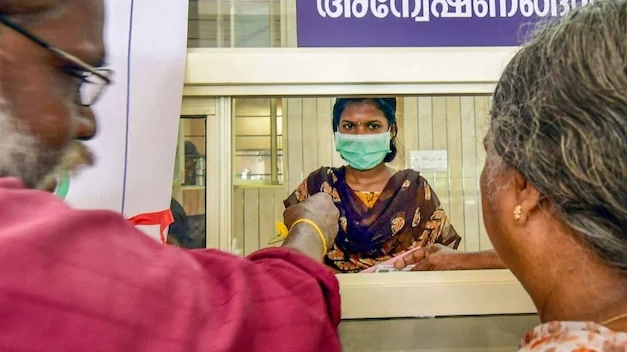Emergency responders were forced to suspend search operations on Sunday morning amid worsening conditions and new flood warnings in central Texas, where devastating rains continue to hammer the region.
This marks the first interruption in the recovery mission since the catastrophic flooding that struck over the July 4 weekend.
Officials from the Ingram Fire Department ordered all search-and-rescue teams to immediately evacuate the Guadalupe River corridor in Kerr County, citing a high risk of flash flooding. Crews had been combing the area for victims still missing from the earlier flood disaster.
Search operations are expected to resume Monday, depending on river conditions, according to fire department spokesperson Brian Lochte. “We’ve still got a few crews, airboats, and SAR (search-and-rescue) units on standby—just in case,” Lochte added.
The National Weather Service (NWS) warned that heavy rainfall on Sunday could push the Guadalupe River’s water level to nearly 15 feet—about five feet above flood stage—potentially submerging the Highway 39 bridge near Hunt.
“Numerous secondary roads and bridges are already flooded and extremely dangerous,” the NWS advisory stated.
The July 4 floods had earlier caused the river to surge 26 feet in just 45 minutes, sweeping away homes, vehicles, and entire communities as residents slept. Since then, search crews have deployed helicopters, boats, and drones to find the missing and rescue those trapped in trees or stranded at isolated camps.
The Hill Country region, particularly Kerr County—home to vacation cabins, youth camps, and riverside properties—was among the hardest hit. Camp Mystic, a historic all-girls Christian camp located along the river, suffered tragic losses, with at least 27 campers, counselors, and even its longtime owner, Dick Eastland, among the missing or dead.
Experts say the flood event exceeded what FEMA defines as a once-in-a-century disaster and unfolded so rapidly in the pre-dawn hours that many had no time to react—especially in an area with no flood alert system in place.
The sheer volume of rainfall overwhelmed the landscape. According to former NOAA chief scientist Ryan Maue, approximately 120 billion gallons of water fell on Kerr County during the storm—making it the epicenter of the disaster.
Texas has seen a string of deadly flash floods this summer. Just last month, San Antonio was drenched with over seven inches of rain in mere hours, resulting in dozens of water rescues and at least 13 fatalities.
As storms persist, residents across the region are being urged to remain alert and prepare for further flooding.
With AP inputs
This marks the first interruption in the recovery mission since the catastrophic flooding that struck over the July 4 weekend.
Officials from the Ingram Fire Department ordered all search-and-rescue teams to immediately evacuate the Guadalupe River corridor in Kerr County, citing a high risk of flash flooding. Crews had been combing the area for victims still missing from the earlier flood disaster.
Search operations are expected to resume Monday, depending on river conditions, according to fire department spokesperson Brian Lochte. “We’ve still got a few crews, airboats, and SAR (search-and-rescue) units on standby—just in case,” Lochte added.
The National Weather Service (NWS) warned that heavy rainfall on Sunday could push the Guadalupe River’s water level to nearly 15 feet—about five feet above flood stage—potentially submerging the Highway 39 bridge near Hunt.
“Numerous secondary roads and bridges are already flooded and extremely dangerous,” the NWS advisory stated.
The July 4 floods had earlier caused the river to surge 26 feet in just 45 minutes, sweeping away homes, vehicles, and entire communities as residents slept. Since then, search crews have deployed helicopters, boats, and drones to find the missing and rescue those trapped in trees or stranded at isolated camps.
The Hill Country region, particularly Kerr County—home to vacation cabins, youth camps, and riverside properties—was among the hardest hit. Camp Mystic, a historic all-girls Christian camp located along the river, suffered tragic losses, with at least 27 campers, counselors, and even its longtime owner, Dick Eastland, among the missing or dead.
Experts say the flood event exceeded what FEMA defines as a once-in-a-century disaster and unfolded so rapidly in the pre-dawn hours that many had no time to react—especially in an area with no flood alert system in place.
The sheer volume of rainfall overwhelmed the landscape. According to former NOAA chief scientist Ryan Maue, approximately 120 billion gallons of water fell on Kerr County during the storm—making it the epicenter of the disaster.
Texas has seen a string of deadly flash floods this summer. Just last month, San Antonio was drenched with over seven inches of rain in mere hours, resulting in dozens of water rescues and at least 13 fatalities.
As storms persist, residents across the region are being urged to remain alert and prepare for further flooding.
With AP inputs








